The Pictus Catfish is a beautiful fish from the Amazon River Basin & Orinoco River Basin. The Pictus Catfish is a popular choice for aquariums because of its unique appearance and peaceful demeanor.
They are certainly the fish that add color and personality to your freshwater tank. If you want to know more about them, then please continue reading!
Pictus Catfish make a fantastic pet for any community aquarium and are sure to brighten up your day. This article will tell you everything you need to know about keeping pictus catfish in your aquarium. Reading this article will get a complete guide about the pictus catfish.
We will tell you everything from their appearance and diet, what tank mates to avoid when keeping them, and how to make sure they thrive in your aquarium.
Table of Contents
- Species Summary
- Pictus Catfish Care
- Tank Size
- Water Parameters
- Water Changes
- Cleaning The Tank
- Ammonia, Nitrates, & Oxygen Level
- Diet In The Wild
- Diet & Nutrition In Captivity
- Feeding Frequency
- Different Feeding Methods
- Water Conditioners
- Lighting & Heating Requirements
- Filtration
- Aquarium Decorartions
- Transportation & Handling
- Tankmates
- Sexing The Pictus Catfish
- Diseases & Disorders & Their Symptoms
- Treatments and Medications Of Diseases
- Preventing Diseases
- Advantages Of Having Pictus Catfish In Your Tank
- Disadvantages Of Having Pictus Catfish In Your Tank
- Conclusion
Species Summary
| Scientific name: | Pimelodus pictus |
| Common name: | Pictus Catfish |
| Family: | Pimelodidae |
| Origin: | Amazon River Basin & Orinoco River Basin |
| Life span: | 5-10 years |
| Maximum length: | 6 inches |
| Minimum tank size: | 50 gallons |
| Water temperature range: | 75°-82°Fahrenheit |
| pH range: | 7.0 – 7.4 |
| Diet: | Omnivores |
| Habitat: | Freshwater |
| Lighting Requirement: | Moderate |
| Activity Level: | Medium |
| Care level: | Easy |
| Temperament: | Peaceful |
| Compatibility: | Community fish |
| Water hardness: | 5-15 dGH |
| Egg count: | 100-200 |
| Fry care: | Easy to moderate |
| Breeding season: | Spring |
| Cost: | $5-15 USD each |
The Pictus Catfish is a fish with striking colors. They are very calm and mind their own business when kept in a community tank. They are slightly timid and will not be seen so much during the day.
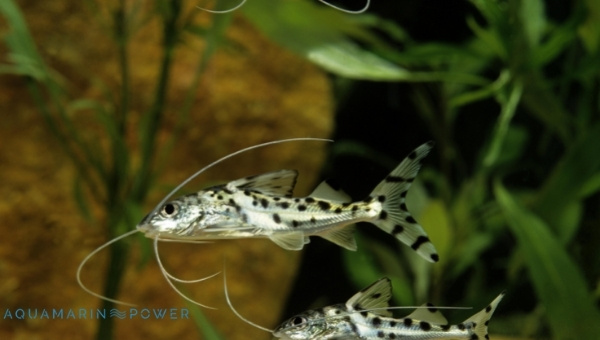
They are readily available in the pet trade and are generally inexpensive, costing anywhere from $5-15 USD each. Before getting your Pictus Catfish, you should ensure that the fish is healthy. You should pay attention to its fins and body, looking for any signs of infection or damage.
Ensure that the fins and body are not clamped down and that the fish is actively swimming. If this is not the case, the fish may be sick, and you should look for another one. Get your fish from a reputed dealer or a reputed pet store only to ensure that they have been adequately bred and live their full life.
Pictus Catfish Appearance
The Pictus Catfish is a beautiful fish. It has a silver body with black markings and is a popular choice for aquariums because of its unique appearance. This species is easily identified by its long barbels located around the mouth.
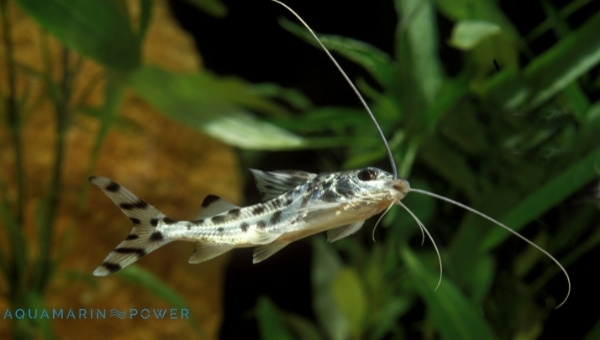
The scales on the body of this fish are small, and the fish has a long, thin tail. The fins are black, and the pectoral fins are long and thin. The eyes are large, and the mouth is tiny. The color of the eyes is usually red but can vary depending on the habitat.
Pictus Catfish Habitat
The Pictus Catfish is a freshwater fish that prefers warm water temperatures. This fish can be found in slow-moving rivers, lakes, and ponds in the wild. They like to hide in submerged vegetation or the shady areas of their habitat.
Pictus Catfish Size & Lifespan
The Pictus Catfish can grow up to 6 inches in length and typically has a life span of 5-8 years. They can still live a little longer in an aquarium and have been known to live for up to 10 years.
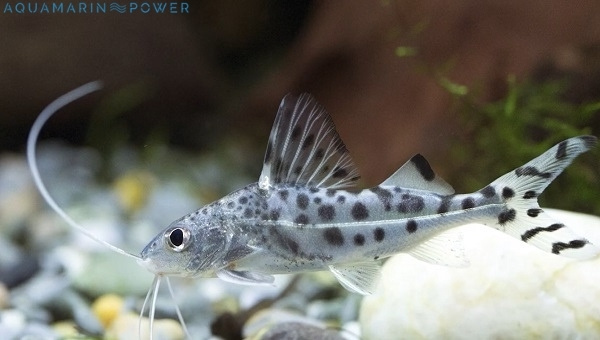
This is because they are not exposed to the same diseases and predators that they would be in the wild.
Behavior & Temperament
They are peaceful fish that is relatively active. They like to hide in the shadows, and they are not often seen in the open. They are not aggressive, and they will not bother other fish in the tank. These fish are timid, and they can be easily scared.
It is essential to ensure that their tank is well decorated with plenty of hiding places. Their behavior towards humans is unknown.
Breeding
The Pictus Catfish is not easy to breed in captivity. They are difficult to sex, and they often do not breed unless they are in a large group. They are egg-layers, and they typically lay their eggs on plants or other surfaces in the tank. The process starts when the female starts to chase the male around the tank.
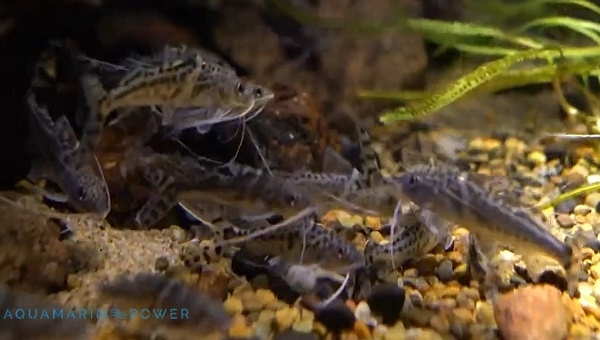
The male will then release his sperm, and the female will pick it up with her mouth. She will then go off and lay her eggs in a safe place. It can take several days for the eggs to hatch. Once they have hatched, the fry will be left to fend for themselves. If you are interested in breeding these fish, it is best to consult with an expert.
Gestation Period & Eggs
The gestation period for the Pictus Catfish is around 28 days. The female will lay anywhere from 100 to 200 eggs during this time. The eggs are typically small, and they are often difficult to see.
Raising The Fry
The fry of the Pictus Catfish is tiny, and they are challenging to raise. They need to be fed live food such as baby brine shrimp or micro worms. They start to swim and feed on their own after a few days.
It is important to keep the water quality high during this time as they are susceptible to changes in the water. The fry will grow slowly, and they will not reach maturity until they are around three months old.
Pictus Catfish Care
The Pictus Catfish is a relatively easy fish to care for. They are hardy and can tolerate a wide range of water conditions. These fish are also very active and love to explore their surroundings. They are peaceful fish that get along well with other tank mates.
Tank Size
The Pictus Catfish can be kept in a tank at least 50 gallons in size. However, it is recommended that you give them more space if possible. A larger tank will provide more swimming room and make it easier to keep the water quality high.
The tank size also depends on the number of Pictus Catfish you keep. If you are holding one fish, then a 50-gallon tank is fine. But if you are keeping multiple fish, you will need a larger tank. For numerous fish, a tank of at least 100 gallons is recommended.
Water Parameters
The Pictus Catfish prefers warm water that is between 75°-82°Fahrenheit. They also prefer a water pH of 7.0-7.4 and a water hardness of 5-15 dGH. It is essential to keep the water quality high in your aquarium because this fish is susceptible to changes in the water.
The salinity of water must be at 0.5-1.0%. The gravity should be between 1.020-1.025.
Water Changes
It is essential to do regular water changes in your aquarium to keep the water quality high. The Pictus Catfish is very sensitive to changes in the water, so it is essential to keep the water clean.
A good rule of thumb is to do a 25% water change every two weeks. However, you may need to do more frequent water changes if the water quality in your aquarium is not good.
Cleaning The Tank
Cleaning the tank is not so difficult. The first step is to remove all the water from the tank. You can do this by using a siphon or a bucket. Once all the water is out, you can start cleaning the tank. You may use a mild detergent to clean the tank. Use a soft brush to clean the sides of the tank. Remove all the decorations from the tank and clean them with scrub and detergent.
Once the tank is clean, you can put the water back in and add your fish. Before adding water to the tank, make sure that the water is clean and that no detergent residue is left in the tank or on decorations, as this can be harmful to your fish.
Ammonia, Nitrates, & Oxygen Level
They require water with a low to moderate amount of ammonia and nitrates. The water should also have a high level of oxygen. An excellent way to increase the oxygen levels in your tank is to add an air pump or a powerhead.
The ideal ammonia level for these fish is 0 ppm, and the perfect level of nitrates is 10-20 ppm. The oxygen level must be between 5 and 8 ppm for these fish to thrive.
Diet In The Wild
The Pictus Catfish is a predatory fish, and in the wild, its diet consists of small fish, shrimp, and other invertebrates. They will also nibble on algae and other plant matter. Finding food in the wild is not difficult for this fish because it is a good swimmer and has long barbels that help it find food.
Diet & Nutrition In Captivity
In captivity, the Pictus Catfish will eat most meaty foods, including frozen foods, live foods, and pellets. They should be fed various foods to ensure that they are getting all the nutrients they need.
Feeding Frequency
The Pictus Catfish should be fed a small amount of food 2-3 times per day. This will help prevent overfeeding and keep the water quality in your aquarium high. The amount of food given to them depends on their size. A good rule of thumb is to provide them with enough food to eat it all in 2 minutes.
Different Feeding Methods
The Pictus Catfish can be fed using several different methods. The most common methods are by hand, with a feeding spoon, or with a feeding stick. You can also put the food in the bottom of the aquarium and let the fish feed on there.
Each method is discussed below:
- Hand Feeding: The easiest way to feed your fish is by hand. Simply place a small amount of food in your hand and let the fish eat it. This is an excellent method to use if you are trying to train the fish to eat from your hand.
- Feeding Spoon: Another way to feed your fish is with a feeding spoon. This is a small spoon that you can use to place the food in the fish’s mouth. This method is suitable if you are trying to feed the fish a specific amount of food.
- Feeding Stick: The third way to feed your fish is with a feeding stick. This is a long stick with a small scoop on end. You can use this to place the food in the fish’s mouth or at the bottom of the aquarium.
Water Conditioners
It is essential to use water conditioners in your aquarium to keep high water quality. Water conditioners help remove harmful toxins from the water, and they also help stabilize the water’s pH. A good brand of water conditioner to use is Seachem Prime.
Lighting & Heating Requirements
The Pictus Catfish does not require a lot of light. A good rule of thumb is to provide them with 10-12 hours of light per day. You can use either natural or artificial light.
If you are providing them sunlight, make sure that the tank is not in direct sunlight as this can cause the water to overheat and if you are providing them with artificial light, then make sure that it is not too bright. The Pictus Catfish also does not require any special heating requirements.
They prefer water around 75°-82°Fahrenheit, so a simple aquarium heater will suffice. A good brand of heater to use is the Fluval Eheim Jager aquarium heater.
Filtration
The Pictus Catfish does not require a lot of filtration. However, it is still important to have a good quality filter in your aquarium. A good brand of filter to use is the Fluval C4 Power Filter.
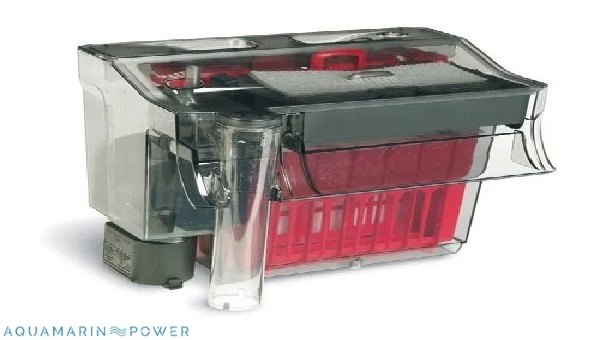
This filter is very quiet, and it filters up to 187 gallons of water per hour. It also has a self-priming feature, which is very convenient.
Aquarium Decorartions
When decorating your aquarium for the Pictus Catfish, it is important to use plants and rocks that provide plenty of hiding places. These fish likes to hide in submerged vegetation or the shady areas of their habitat.
You can also use a cave or other shelter to give them a place to hide. Some good decorations to use are rocks, driftwood, and caves. You can add live plants like Java Fern or Anubias to provide them with hiding places and help oxygenate the water.
- Substrate & Gravel: The Pictus Catfish does not require a special substrate in its tank. They prefer to hide in the shadows and stay hidden most of the time. A layer of gravel or sand will suffice. Avoid using sand as a substrate as this can irritate their barbels.
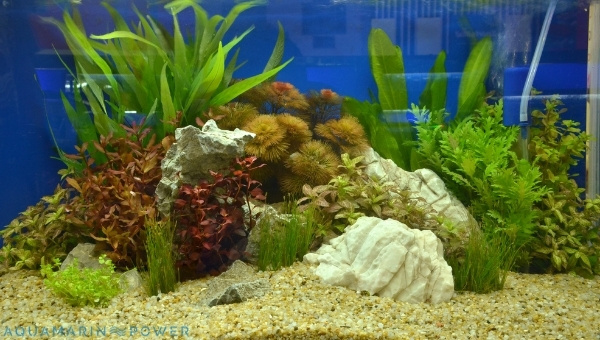
- Protein Skimmer: A protein skimmer is a device that helps to remove organic pollutants from the water. It is good to have one in your aquarium if you are keeping the pictus catfish. A good brand of a protein skimmer to use is the AquaC Remora Pro Protein Skimmer.
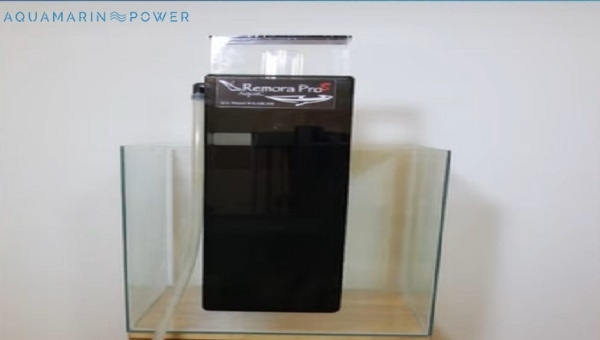
- Gravel Vacuum: A gravel vacuum is a device that helps to remove debris and waste from the gravel in your aquarium. It is good to use one of these vacuums every week to help keep the water quality high. A good brand of gravel vacuum to use is the Python No Spill Clean and Fill Aquarium Maintenance System.
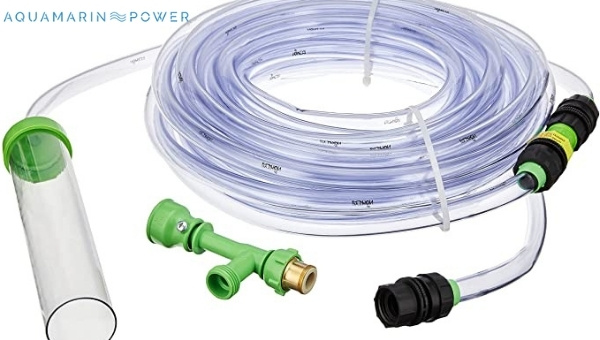
- Water Test Kits: It is important to regularly test the water in your aquarium to ensure that the levels of ammonia, nitrates, and oxygen are all within the ideal range. A good brand of water test kit to use is the API Freshwater Master Test Kit.
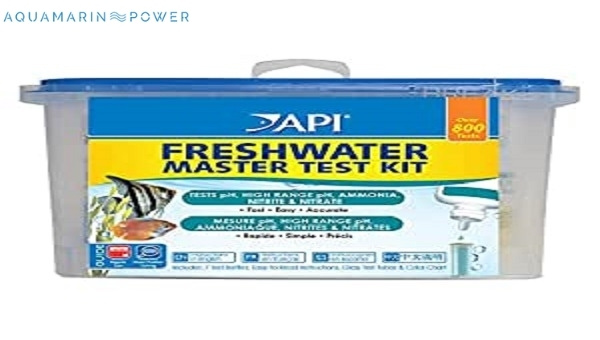
This kit tests for all of the significant water parameters, and it comes with clear instructions on how to use it.
Transportation & Handling
It is important to use a fishnet when transporting or handling the Pictus Catfish. Gently scoop them up in the net and remove them from the aquarium.
Be careful not to squeeze them too tightly as they can easily become injured. Your hands should be wet when handling them to reduce the chances of them becoming stressed.
Tankmates
The Pictus Catfish is a peaceful fish that can be kept with other peaceful fish. They are not aggressive, and they will not bother other fish in the tank.
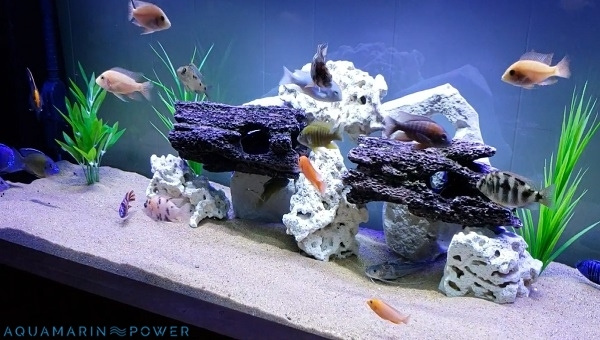
Avoid keeping them with larger fish as they may become prey. It is also a good idea to keep them with fish with similar water requirements. They can also be kept with other Catfish species.
Some good tank mates for the Pictus Catfish are:
- Green Neon Tetra
- Cardinal Tetra
- Emperor Tetra
- Guppies
- Platies
- Mollies
Some Tank mates which you should avoid keeping:
- African Cichlids
- Blood Parrot Cichlids
- Firemouth Cichlids
- Jack Dempsey Fish
Sexing The Pictus Catfish
The Pictus Catfish is a sexually dimorphic species, which means that the males and females look different from each other. The males are typically larger than the females, having longer barbels. The males also have a more pointed head.
The easiest way to sex these fish is by looking at their barbels. Another way of telling them apart is by looking at their anal fins. The males have longer and broader anal fins than the females.
Diseases & Disorders & Their Symptoms
The Pictus Catfish is not known to be susceptible to any diseases or disorders. However, they can sometimes get some diseases. They are:
- Ich: This is a common parasite that can be treated with medication. The symptoms include white spots on the body, fins, and gills. The fish might start to scratch themselves, losing their appetite.
- Dropsy: This is a severe condition that can be fatal. The symptoms include a bloated body, standing out scales, and sunken eyes. The fish will lose its appetite, and it might start to swim abnormally.
- Fin Rot: This is a bacterial infection that can be treated with antibiotics. The symptoms include frayed or shredded fins, redness and swelling of the fins, and black or greenish streaks on the fins. The fish might start to scratch themselves, losing their appetite.
Treatments and Medications Of Diseases
A few treatments and medications can be used for the Pictus Catfish. Ich can be treated with medicines like Malachite Green or Copper Sulfate.
Fin Rot can be treated with antibiotics like Kanamycin or Nitrofurazone. If the fish has fin rot, the fins can be trimmed to help them heal. Dropsy can be treated with fluid therapy and diuretics.
Preventing Diseases
The best way to prevent diseases and disorders is to quarantine new fish before adding them to your tank. This will help to prevent the spread of any diseases or parasites.
You should also keep the tank clean and do regular water changes. It is also important to feed your fish a well-rounded diet.
Advantages Of Having Pictus Catfish In Your Tank
There are many advantages of keeping Pictus Catfish in your tank. Some of these advantages are:
- The Pictus Catfish is a very active fish, and they love to explore its surroundings.
- They are also peaceful fish that get along well with other tank mates.
- These fish are relatively easy to care for, and they are hardy.
- They can tolerate a wide range of water conditions, making them ideal for beginner aquarists.
Disadvantages Of Having Pictus Catfish In Your Tank
Some disadvantages of having them in your tank are:
- The Pictus Catfish is a small fish, and it can be challenging to see.
- They also grow slowly and will not reach maturity until around three months old.
- Caring for the fry can be difficult.
- It is difficult to differentiate between males and females.
Conclusion
If you are looking for an interesting fish to add to your aquarium, the Pictus Catfish is a great choice! With its unique appearance and peaceful nature, the Pictus Catfish will be a welcome addition to your home.
So, if you are looking for an active and peaceful fish that is easy to care for, then do your complete research and understand everything you need to about these fantastic water creatures and then add them to your tank.
Care for them the way they should be cared for, and they will flourish and become a significant part of your aquatic world.
There you have it! Everything you need to know about the Pictus Catfish. We hope you have found this article informative and helpful.
If you have any other questions, please ask a fish expert at your local pet store. Thank you so much for reading!



